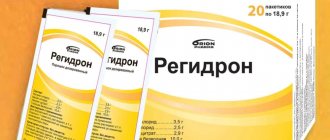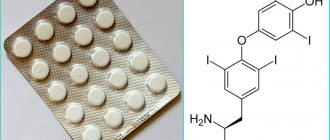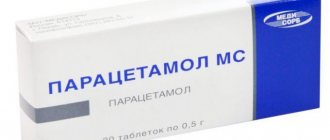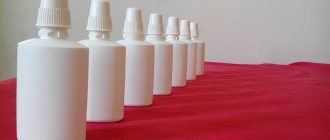Datura common - Datura stramonium L. An annual light green plant from the nightshade family. Has a very unpleasant smell.
The stem of Datura is erect, from 15 to 80 cm in length, thick, hollow inside. The stem is branched into three equal branches. The root of the plant is spindle-shaped, white.
The leaves are alternate, petiolate, ovate, pointed, large and long. Their length reaches 20 cm. Along the edge, the leaf plate has notched, sharp-toothed outlines.
The flowers of the plant are very large and solitary. They are located on the forks of branches. Each flower has a double five-membered perianth. The calyx is tubular, with short teeth, pentagonal.
Some authors claim that Jupiter rules the plant. According to others - Saturn.
The corolla of the flower is white, tubular-funnel-shaped. It has a folded limb, its length reaches 12 cm. The pistil has an upper two-locular ovary and a two-fingered stigma.
Datura fruits have the shape of an egg-shaped box, their size reaches 5 cm. They are covered with hard, large thorns. They are surrounded below by the bent base of the cup.
Datura blooms from July to the end of autumn, depending on the flowering, the fruits ripen at different times starting in July.
Chemical composition
Datura is also called henbane or datura. Despite the fact that it can cause serious consequences if used incorrectly, the plant is widely used in both traditional and folk medicine. This is due to the fact that the herb contains a sufficient amount of substances that are useful and valuable for the body. These include:
- Alkaloids.
Datura contains scopolamine, atropine and goscyanine. These substances can only be found in plants. They affect the central nervous system, muscle tissue and joints. It is the alkaloids that are found in dope in large quantities, as a result of which the plant has hallucinogenic properties. - Carotene.
This is provitamin A, which is a pigment. First of all, carotene has the ability to remove free radicals from the body and reduce the negative impact of internal factors. The substance helps increase immunity, support the functioning of the defenses during illness, thereby speeding up the healing process. Carotene also helps reduce cholesterol levels in the blood, which gradually accumulates on the walls of blood vessels, impairing blood circulation. Narrowing of the vascular walls leads to the development of heart attack and stroke. Thus, carotene significantly reduces the risk of such dangerous diseases. - Organic acids.
They have a complex effect on the body, primarily by normalizing metabolic processes and acid-base balance. Organic acids also have the ability to normalize stool, remove toxins from the body and improve the digestion process. The substances help normalize pathogenic microflora in the intestines by slowing the growth of pathogenic and putrefactive bacteria, and have a positive effect on the organs of the digestive system, preventing the development of certain diseases. - Fixed oils.
Such substances participate in metabolic processes, regulating them, and have a positive effect on the condition of the skin, preventing it from dryness and flaking. - Tannins.
They give plants and fruits their astringency and viscosity. Datura contains a sufficient amount of tannins, which have a beneficial effect on the entire body as a whole. They help fight digestive tract disorders such as diarrhea and dysbacteriosis. In addition, tannins have a bactericidal effect due to the fact that they form a thin film, which prevents the entry of pathogenic microorganisms. They also have an anti-inflammatory effect and help stop bleeding. The benefits of tannins for the body also lie in their ability to eliminate kidney stones, digestive disorders, inflammatory processes, and intoxication. - Essential oils.
They have a positive effect on the condition of hair and skin, protecting them from the harmful effects of various factors. In addition, such oils help normalize the functioning of the organs of the endocrine system, the nervous system, and restore the water-salt balance. - Steroids.
Datura also contains steroids, which have a complex effect on the body. First of all, they help improve appetite, which is why they are often used for anorexia. Steroids help you gain weight quite quickly. They also help normalize the functioning of the thyroid gland and strengthen bone tissue. The substances also have a positive effect on the condition of cells, improving their nutrition, metabolic processes, and increasing the number of red blood cells.
This composition allows the plant to be used for medicinal purposes. All of them have a positive effect on the body, helping to improve the condition of the disease and restore disrupted processes. Datura is also used in cosmetology.
What it looks like and where it grows
Datura is an annual plant. It grows quite quickly and, in the presence of fertile soil and favorable conditions, can grow more than a meter in height. Datura root is branched and has a central stem. The stem is straight, glabrous and branched.
A distinctive feature of Datura herb is its aroma. Not only the flowers, but also the leaves have a fairly strong smell. Datura has large dark green leaves. There are teeth and grooves along the edges.
Datura flowers are large, which is why the plant is an ornamental variety and is popular among gardeners; it is distinguished by its funnel-shaped shape. Petals are pointed. White flowers are formed one at a time. But the duration of their flowering is short. Another feature of the grass is that the flowers bloom in the evening. They are closed during the day.
Datura also has fruits in which small black seeds ripen. The fruits themselves are spherical, always large, and distinguished by the presence of spines.
It grows well in Crimea; it can be found in Southern and Central Europe and Africa. The plant is also common in the Baltic states and the European part of Russia. The grass loves sunny, warm places and often grows near houses, in vegetable gardens, fields and wastelands.
Kinds
To date, 13 types of datura grass are known. But only 4 types are most common, which are used for decorative purposes and in folk medicine for the preparation of medicinal compositions. These include:
Datura common
This is the most common type. It is considered a weed, since it is difficult to get rid of it in the garden. The height of the common dope can reach 1.3 meters. The stem is straight, covered with large leaves. There are very few flowers on the bush. At the end of June, white corollas appear, the length of which is 10 centimeters. To decorate garden plots, a decorative variety of Datura vulgare is used.
Indian
This is a dangerous plant, since its use even in small quantities leads to severe intoxication. This is due to the fact that the herb contains poisons. Datura of this species is distinguished by ovoid leaves that are gray-green in color. The flowers are small, only 12 centimeters in length, double, white. Indian datura was previously used by residents of North and Central America as a hallucinogenic and hypnotic.
Indian
It is classified as a decorative species. It grows as a branched bush up to one meter high. The leaves are large, oblong, attached to the stem with small petioles, and are dark green in color. There are several varieties of Indian Datura, but the most popular are:
- Medea.
It has large white flowers, the diameter of which reaches 20 centimeters. - Ballerina.
The flowers are double and consist of several rows of petals. There are yellow or light purple. - Flor Pleno.
Features large purple flowers with fine speckling.
Fragrant
Today it is classified as fragrant brumgansia. This is a small shrub with straight shoots. A distinctive feature of the plant is that it is always green. Fragrant Datura has funnel-shaped, tubular flowers of white color. The terry variety is more common. The fruits are juicy berries. The leaves of the fragrant dope are formed on both sides of the stem alternately. Their apex is pointed, and the plate itself is ovoid.
Each type of dope has its own characteristics. But in folk medicine and cosmetology the ordinary one is used. It is important to remember that even ornamental plant varieties can be harmful to the body, as they contain toxic substances.
Collection and storage
Leaves, flowers, seeds and stems are used to prepare medicinal compositions; roots are not used. Harvesting is done in the absence of rain, when the plant blooms. Typically the collection period is June-October. It is important to remember that raw materials should be collected and prepared before frost.
Dry the plant under canopies, avoiding exposure to sunlight. Ultraviolet radiation destroys the beneficial substances contained in dope. You should not dry another plant nearby. While drying the dope, it is often stirred.
The seeds are collected only after they are fully ripe. They are also dried. Everything is stored in a glass container with a tightly closed lid. The shelf life is no more than two years.
Procurement of raw materials
Medicinal raw materials are leaves, plant tops and seeds. Raw materials are collected during the flowering period, always wearing gloves and a gauze bandage.
You need to dry the raw materials immediately in the shade, in a well-ventilated area. Seeds are harvested from ripe fruits, preferably in the fall.
The seeds are sorted and dried in a dryer or oven. Raw materials should be stored in closed containers with well-closing lids. The shelf life of raw materials is 2 years.
After collecting raw materials or turning during drying, be sure to wash your hands with soap. Even if the work was carried out with gloves. When crushing the leaves, you should wear a gauze bandage over your nose and mouth.
Medicinal properties of Datura
The plant contains certain substances, each of which has a specific effect on the body. This is what allows the herb to be used as a remedy for most diseases. The medicinal properties of the plant include:
- Antispasmodic.
Datura helps eliminate spasm of the tissues of the digestive system, which leads to unpleasant symptoms. Often spasm is the cause of painful sensations. - Antitussive.
Datura has long been used by folk healers as an antitussive. Today you can also find plant-based drugs in pharmacies. This effect is achieved due to the content of tannins, carotene and essential oils. - Calming.
The herb contains components that have an effect on the nervous system. A small amount of them helps relieve stress and get rid of depression. But it is important to remember that an overdose of dope will cause hallucinations and headaches. - Painkiller.
It is known that Datura grass also has narcotic properties. This allows the plant to be used as a pain reliever. It is also important to calculate the dosage correctly. The pain can also be relieved as a result of the antispasmodic effect. It is spasms that most often cause pain. - Anti-inflammatory.
Datura herb also copes well with inflammatory processes. Thanks to the tannin content, it is possible to relieve inflammation in the tissues of the respiratory and digestive system. - Antibacterial.
Datura does not fight germs, but helps prevent them from getting on the mucous membranes. This effect is achieved due to the enveloping property of the plant. The active components form a special film on the surface of the mucosa, which acts as a barrier. - Strengthening.
Datura has the ability to strengthen the immune system and increase the body's defenses. As a result, the recovery process takes less time, and the risk of complications is significantly reduced.
The plant helps strengthen bone tissue and normalize the functioning of the digestive and nervous systems. The presence of steroids and tannins in the composition allows the herb to be used to normalize the functioning of the endocrine system. It is the main source of hormonal substances that control and regulate the functioning of the entire body.
Contraindications
- glaucoma;
- pregnancy;
- breastfeeding period;
- individual hypersensitivity to the plant.
Datura common is a poisonous plant, and all parts, and especially the seeds, are poisonous.
You should not abuse crazy herb preparations, since an overdose can cause severe poisoning. Its symptoms: dryness of the oral mucosa, severe thirst, headache, dilated pupils, unrelated speech, motor agitation, rapid pulse, hallucinations, hyperemia of the skin of the face and neck, hoarseness of voice, possible coma. Help in case of poisoning: gastric lavage with a weak solution of potassium permanganate (potassium permanganate), prescription of adsorbents, morphine, anticholinesterase and cholinomimetic drugs (prozerin, eserin, pilocarpine), symptomatic therapy.
Preparations based on datura
The plant has long been popular with traditional healers. But it is also used for the production of pharmaceutical drugs. The most popular of them are:
"Scopolamine hydrobromide"
The product is released in ampoules. Intended for subcutaneous administration. Dispensed exclusively with a doctor's prescription.
"Hyoscyamine sulfate"
Refers to drugs from list A (potent, narcotic drug). The medicine is released in the form of a solution that is administered subcutaneously. The dosage is calculated carefully for each patient individually depending on the disease. The medicine is also prepared in the form of an alcohol solution. Intended for oral administration. It is used for bronchial asthma, as it helps to stop attacks, as well as for spastic conditions of the abdominal cavity. It can also be prescribed in the presence of diseases of the cardiovascular system.
"Astmatin"
It is a smoking mixture. Used to treat complicated or advanced bronchial asthma. The composition includes henbane leaves, dope and saltpeter in a certain ratio. The drug is produced in the form of cigarettes.
"Aeron"
A tablet drug included in List B. Available by prescription for air or sea sickness, toxicosis during pregnancy, which is expressed in regular nausea.
Leaf powder
Used as an antispasmodic and antiseptic. It can also be prescribed for motion sickness on an airplane, on a ship, and for the treatment of certain diseases of the digestive system.
All drugs require careful adherence to dosages and can only be dispensed with a prescription from a specialist. Taking them on your own is strictly prohibited.
For what diseases is Datura used?
The plant is used in folk medicine for certain diseases. Due to its properties, Datura is used in the following cases:
Respiratory system diseases
The plant helps cope with bronchial asthma and whooping cough. The positive effect is achieved with the help of the ability to relieve spasm of the smooth muscles of the bronchi. The use of drugs and traditional medicine helps to get rid of obsessive cough and regular attacks.
Pathologies of the gastrointestinal tract
The plant contains atropine. It belongs to the antispasmodic substances and allows you to relieve pain in the stomach.
If there are parasites
A special feature of the plant is its ability to rid the body of parasites. But at the same time, it is not taken in the form of an infusion or decoction, but the leaves are set on fire and the smoke is inhaled. Datura is used to destroy parasites that attack the visual apparatus and lungs.
With nervous excitement
Datura is used for convulsions, excessive sexual excitability and neuroses. The dosage is calculated individually so as not to harm the body.
Datura herb can also be used for external use. Based on it, infusions are made that help relieve pain and inflammation from rheumatism, wounds, burns and cuts. Solutions are used for compresses, moistening gauze folded in several layers into them. Decoctions are also recommended for douching in the presence of diseases of the rectum and reproductive system in women.
With the help of decoctions, rubbing is done for tumors, sprains, mastopathy, eczema. This remedy helps get rid of toothache. It is believed that Datura can help get rid of unwanted body hair.
The plant is widely used in homeopathy. Based on it, a popular tincture is made, which is used for epilepsy, neuralgia, whooping cough and other diseases.
Thus, Datura has a wide spectrum of action and has earned the trust of traditional healers.
For hair removal
Most women use Datura oil to remove unnecessary hair, while the skin itself, according to the beauties, becomes very soft, beautiful and elastic. Penetrating into the hair follicle, the revitalizing substances of the oil destroy it inside, and therefore the hair here will never grow back.
At the beginning of the action, epilation of the hair cover is carried out in a small area, then with a cotton swab, the oil is hammered into the open bulbs. If the operation is tolerable and does not cause undesirable effects, it is continued the next day and so on until the hair is completely removed.
Basically, the course of removing unnecessary hair on the legs lasts at least 2 months. Then a break is taken to allow the not completely destroyed bulbs to germinate and new bulbs to awaken. And even if at first it is not possible to achieve a lasting result, then the hair on the legs becomes brighter and not so hard, and the process of hardware hair removal will occur completely without pain.
A tincture of Datura root and seeds (a less concentrated product than oil) is used to remove unwanted hair from one part of the body.
Datura in folk medicine
The plant has been used in folk medicine for a long time and various products are made on its basis.
Cough tincture
It is taken for regular, advanced cough, bronchial asthma, and sore throat. Datura seeds are used to prepare it. They need to be crushed and filled with 70% alcohol in a ratio of 1:5. Infuse everything for two weeks. Take 2 drops per glass of water before meals 5 times a day.
Baths for hemorrhoids
The disease is common among people leading a sedentary lifestyle. It is characterized by severe symptoms in the form of pain in the anus and requires complex treatment.
To prepare it, take 20 pre-dried dope leaves, pour a glass of boiling water and leave for an hour. Dilute everything with a bucket of warm water, leave for another hour, and then do sitz baths.
Cure for Depression
It is also used for nymphomania and epilepsy, helping to improve the functioning of the nervous system. The solution is prepared from a drop of dope juice added to 2 large spoons of water. Take the product three times a day.
Tincture for drowsiness and neuralgia
Based on the datura herb, a remedy is made that helps with bronchial asthma, neuralgia, constant drowsiness, convulsions and whooping cough.
To prepare the tincture, you need to pour 2 large spoons of the pre-dried plant with a glass of boiling water. Place everything in a water bath for 5 minutes. Do not take the tincture orally, but inhale the steam for 20 minutes. The procedure should be carried out carefully so as not to get burned by hot steam.
Remedy for mastitis
In case of mastitis or tumors, the use of lotions is recommended. The solution for them is prepared on the basis of dope seeds. They need to be filled with a glass of water in the amount of 1 large spoon.
Infuse the product for several hours, then strain. Make lotions using gauze, soaking it in the solution and applying it to the affected area.
Decoction for rheumatism
The disease is characterized by an inflammatory process that affects the membranes of the heart muscle. To eliminate it, a decoction based on dope leaves is recommended.
To prepare the product, you will need to take 30 pre-dried, crushed leaves of the plant and pour all 10 liters of cold water. Place the container on the fire, bring to a boil and cook for half an hour over low heat. Then cool the solution and strain. The decoction is used for baths. Take them once every 2 days for 15 minutes. The course of therapy is 20 days.
Video:
use of datura herb in folk medicine Expand
Motion sickness mixture
You can buy this product at a pharmacy or prepare it yourself. Used for seasickness or when flying.
First of all, you should prepare a powder from the dried leaves of the plant in the amount of 10 g. Then pour them with a glass of water and pour them into a bottle. The product should be drunk when signs of motion sickness occur.
Parasite mixture
Datura, according to traditional healers, helps fight parasites that affect the lungs and visual apparatus of humans. These include cysticerci, schistostomes, acne, and pulmonary flukes. They have a negative effect on the body, causing intoxication.
A cleansing procedure is carried out with the help of the plant. There are several ways to get rid of parasites:
- Pour fresh or dried leaves of the plant onto a baking sheet and put on fire. After some time, smoke begins to be released, which must be inhaled. In this case, the eyes must be open. But the procedure should be carried out with caution, as the plant is poisonous. It is recommended to get as close to the source of the smoke as possible. After slight dizziness appears, it is important to stop the procedure and ventilate the room. These measures will help reduce the risk of hallucinations and other side effects.
- You will need to put on unnecessary clothing before the procedure. Pour fresh or dried herbs into a frying pan and place on the stove. Fry the plant until the room is completely filled with smoke. After a slight degree of intoxication appears, immediately leave the room, ventilate everything, and take off your clothes.
- This method involves smoking dope using foil and a plastic bottle. Bend the container into two parts and make a small hole in the bottom. Cover the top of the bottle with foil, pierce it with a needle 8-9 times and sprinkle chopped herbs on it. Set it on fire and draw in the smoke.
Just one procedure is enough to free the body from parasites. Due to the special properties of the plant, they leave their habitats in a short time.
Impotence remedy
Datura helps restore male strength. To prepare the product, you will need to take 2 large spoons of dried leaves of the plant and pour a glass of 70% alcohol. Leave everything for two weeks.
Take the tincture 25 drops two hours after dinner. Continue the course of therapy for a month, repeat after six months.
For stroke
In order to alleviate the condition after a stroke and reduce the likelihood of an attack and the formation of blood clots, an alcohol tincture based on dope is recommended.
To prepare it, you will need 0.5 liters of alcohol and 85 g of dried seeds. Combine all components and leave in a glass container for two weeks. It is important to shake the bottle daily. Take 25 drops daily, diluting them in 100 ml of water.
The course of therapy is a month. The tincture should be taken before meals. It also helps in the presence of thrombophlebitis.
Types of healing compounds
Several types of medicinal compositions are made based on dope. All of them are used in the treatment of certain diseases. When preparing them, it is important to carefully observe the dosages in order to prevent unpleasant consequences from their use.
Infusion
It is used for baths and oral administration in the presence of diseases of the gastrointestinal tract and respiratory system.
The infusion is prepared from 20 g of dried leaves. They need to be filled with a glass of boiling water. Leave everything for an hour and strain. In addition, the infusion can be used for asthma and whooping cough. In this case, it is necessary to breathe above the steam.
Tincture
You can also prepare an alcohol tincture based on Datura. To do this, use part of the seeds, which must first be crushed, and 5 parts of 70% alcohol. Mix all ingredients in a glass container and leave for a week, stirring daily. After a week, strain the tincture. Take the product orally, 2 drops three times a day, diluting them with a tablespoon of water.
Decoction
The product is prepared both from seeds and from other parts of the plant. To prepare a healing decoction you will need a large spoon of the dried plant. Pour 2 cups of boiling water over everything, put on fire, and bring to a boil. Cook after boiling over low heat for half an hour.
After cooking, strain the broth. It can be used for gargling when coughing, douching, compresses and lotions. You can also use it to do enemas. The decoction is also popular for hemorrhoids, muscle pain, and uterine prolapse. In this case, it is added to the bath.
Tea
This product can be purchased at a pharmacy. It helps relieve nervous tension, get rid of stress and depression. It should be used with caution. To prepare, you will need half a teaspoon of the dried plant and a glass of water. Leave everything for 3-5 minutes, strain and consume.
Ointment
A remedy based on Datura is popular for burns, wounds, cuts and eczema. To prepare the ointment, you will need any fat and a dried plant. Mix all ingredients thoroughly, refrigerate and use as needed. The ointment has a shelf life of one year.
Oil
Seeds are used to prepare it. This product helps remove unwanted hair on the body.
The oil can be purchased at a pharmacy or prepared yourself. To do this, take a tablespoon of seeds, pour in olive oil in the amount of one glass. Leave everything for 24 hours.
Plant characteristics
The plant has a branched stem, a strong, spindle-shaped root, and grows up to one and a half meters. The leaves are alternate, pointed at the end, and large. The flower has an unpleasant smell, and if you rub it in your hands, it becomes stronger and intoxicating.
The culture grows in Siberia, the Caucasus, the Russian Federation, and Ukraine. It likes moist soil best, so it can be found near a house, a ravine, or in a vacant lot. Remember that the plant is poisonous, so watch the dosage so as not to harm yourself, but, on the contrary, to have a healing effect.
The fruit is an egg-shaped capsule. There are up to 800 seeds inside. The outside of the fruit is surrounded by green thorns. The seed is black, flowering period is in July, ripening in October. Datura is propagated by seeds.
Application in cosmetology
Datura herb is also used for cosmetic purposes. It helps restore and maintain the beauty of hair and facial skin. There are several recipes, the most popular of which are:
Anti-hair loss product
Dried leaves in the amount of 30 g pour 150 ml of water. Leave everything for three hours, then strain. Apply the product to damp hair, thoroughly rubbing into the roots. Leave for 15 minutes, then wash your hair thoroughly with shampoo. Carry out the procedure once every 3 days.
Anti-dandruff remedy
The tincture is prepared from 10 g of the plant and a glass of water. Leave everything for one hour and strain. Use after washing your hair, rinsing your hair. After the procedure, rinse everything with running water. Use the product once a week until the problem disappears completely.
Decoction for strengthening hair
It helps strengthen thin and split ends. To prepare it, take 2 large spoons of the plant, pour in 5 liters of water and put everything on low heat. Boil the product for half an hour, cool and strain. Use once a week after washing your hair to rinse.
Tincture against eczema
To eliminate eczema on the face, you can use a tincture of 20 g of dried dope, poured with a glass of boiling water. Leave everything for an hour and strain. The finished product can be used as compresses for eczema. Soak gauze in the infusion and apply to the affected area for 15 minutes.
Mask for sunburn
Datura also helps get rid of sunburn. To do this, you need to prepare an ointment consisting of any fat and a dry plant. Mix the ingredients. Apply the prepared ointment to the affected areas of the skin. This remedy also helps get rid of wounds and cuts.
You should use Datura-based cosmetics with caution, as an allergic reaction may occur. It is important to maintain all proportions, since the plant is poisonous.
We recommend reading:
use of licorice in cosmetology
Read
Side effects
At first glance, it is not so easy to get poisoned by Datura. But, due to its widespread use in the treatment of many ailments, not all patients adhere to the required dosages, as a result of which poisoning occurs. There are cases where the herb is used as a hallucinogenic drug - smoked or simply inhaled smoke from burning leaves. In such cases, poisoning may also occur.
Main symptoms of poisoning:
- sore throat;
- severe excitability;
- vomiting, nausea;
- dilated pupils of the eyes;
- dryness of the oral mucosa;
- the appearance of hallucinations;
- paralysis of some parts of the body.
When the first signs appear, immediately seek medical help. Symptoms can appear within the first 10 minutes or after 15 hours. After treatment, the pupils may remain dilated for more than a week.










